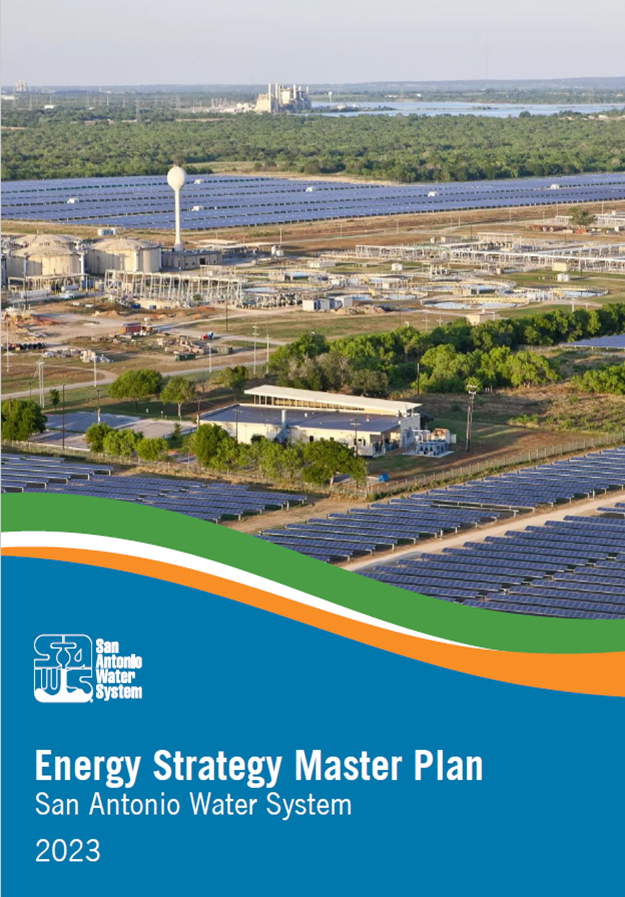
In 2023, SAWS developed its first ever Energy Strategy Master Plan. In 2024, SAWS spent approximately $47 million or 9 percent of its annual operating budget on energy, making it the fourth largest use of funds behind debt service, salaries and wages, and water procurement. Every year, SAWS’ cost of energy is rising due to rate increases and changes in fuel adjustment charges. Strategically managing energy consumption will be key in reducing the impact of future energy cost increases.
In addition to reducing utility expenditures, this plan will be key in supporting the City of San Antonio’s sustainability goals. In October 2019, the city adopted the San Antonio Climate Action and Adaption Plan. The plan set a goal for San Antonio to achieve carbon neutrality by 2050. Energy use is responsible for 48 percent of San Antonio’s greenhouse gas emissions and since SAWS is one of the largest energy consumers in the city, this plan can have a real impact on San Antonio’s carbon neutrality goal.
SAWS is a national leader in water conservation. Drawing on SAWS’ successful history with water conservation, developing this Energy Strategy Master Plan can guide future energy conservation to achieve SAWS’ operating cost, energy and emissions reduction goals without compromising water quality or water conservation. This plan establishes an initial commitment for SAWS to reduce its energy intensity (kWh/unit) by 10 percent by 2028.
In 2024, overall energy intensity increased by 10.2 percent (as referenced on page 4) due to an increased reliance on energy intensive water sources. OES will continue to track and record opportunities to improve SEM’s and projects as the master plan is a living document that will be updated every three years. Reaching this goal will require the support of SAWS’ Board, Executive Team and staff.
Current progress towards the master plan’s 10 percent reduction goal is highlighted below. Despite significant reductions in wastewater and chilled water, overall energy intensity has increased since water makes up the large majority of SAWS’ energy consumption.
| OPERATION | EI METRIC | EI BASELINE | 2024 EI | PERCENTAGE CHANGE |
| WATER | KWH / MG | 3,502 | 3,932 | 12.2% |
| WASTEWATER | KWH / FLOW MG | 1,762 | 1,620 | -8.0% |
| DISTRICT COOLING |
KWH / 1000 TON-HRS | 1,022 | 964 | -5.7% |
| BUILDINGS | KWH / SQUARE FT. | 14 | 14 | -0% |
| TOTAL | 2,893 | 3,188 | 10.2 |
kWh– Kilowatt-hour: measured as 1 kilowatt (1,000 watts) of power expended for 1 hour.